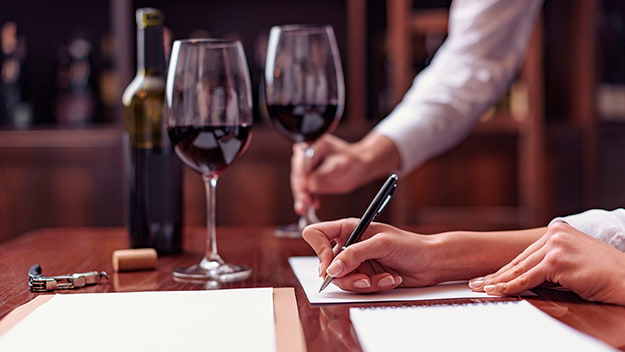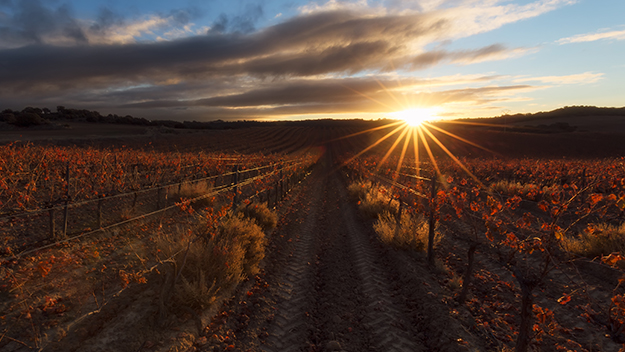Find your winery or vineyard
1 Wineries and Vineyards for sale in Madeira
Infographic of the Denomination of Origin

Change to imperial units (ft2, ac, °F)Change to international units (m2, h, °C)
Madeira
History
Madeira is a rugged volcanic island located in the Atlantic Ocean, 1,000 km from Lisbon, 498 km from Tenerife and 700 km from the African coast, about the same height as Casablanca, presenting a very important strategic position for trade at the time of the ‘discoveries’.
It is one of the autonomous regions of Portugal that historically was an important supply point for explorers on long voyages to the Americas, South Africa and the Indies, a time when its wines became popular, and which surprisingly have not changed much in the last 300 years. Madeira wines are capable of ageing for over a hundred years and were considered by most European courts to be wines of great refinement.
Wine came to Madeira with the Portuguese, given the economic and logistical importance of this product. The island's climate lent itself ideally to wine production, so from 1419, with the installation of the manor structure, vine cultivation began. The first vines apparently came from Greece, from the island of Crete. Later, the five main grape varieties of today's Madeira wine were introduced: Tinta negra mole, Sercial, Boal, Verdejo and Malvasia.
With the development of trade and discoveries in the Gulf of Guinea first, then in the Indian Ocean, India and Brazil, Madeira's strategic importance increased. Wine was a staple commodity for the long voyages between Portugal and India, as well as an element of trade.
The arrival of English traders and the entry of Portugal into their orbit of influence, favoured, as we explained before, the export of Portuguese wine to the British Isles. Port, Dão and Madeira replaced Bordeaux and other French and Spanish wines.
The importance of Madeira is shown by artistic references, such as its presence in William Shakespeare's Henry IV, or in the toast of the Declaration of Independence of the United States, it seems that it was Thomas Jefferson's favourite wine.
Madeira Island wines have more than 400 years of tradition. The birth of viticulture on the island dates back to the 15th century and Madeira wine was already being traded with the American continent during its colonisation. In the 18th century, exports were the main source of income and Madeira wine became so famous among the European elites that Madeira wine was always present at their celebrations. This wine has generated passions among writers, politicians, czars, artists, etc.
But what makes Madeira wine so special?
As it happened with Port wines, the characteristic Madeira fortified wines were born a bit by accident. It was common for the wines to have to pass through long sea voyages to reach their destination in the 15th and 16th centuries. The wines were made from grapes with high acidity and low alcohol content and fortified to withstand the long voyage. The Portuguese observed that wine from casks that travelled to India and, for various reasons, were not sold in Asia and returned to Madeira, gained in quality. Instead of spoiling, the wine turned into liquor thanks to the high temperatures, the humidity in the ships' holds and the movement of the waves. The oxidation process of the wine subjected to the heat on board a ship and its passage through the Equator gave it a very particular character that the winemakers wanted to imitate but without having to go through these long journeys, so they built buildings with a structure that allowed the sun to heat the barrels during the day so that the maturation would be faster. This system is called canteiro, and it uses solar heat to accelerate ageing and caramelise the sugars contained in the wine.
The barrels began to be placed on the beaches, in the open air. Later, the barrels were installed in rooms where humidity and temperature levels were kept very high. The youngest wines were placed in the highest part of the cellar, where the heat was greatest, and continued to descend in the next levels of the building, where the ageing process developed more slowly. For the ageing process, very old barrels are used, as this way they do not contribute foreign aromas to the wine. This system is considered very fine as it causes the wines to oxidise and caramelise at a slower rate. Nowadays, the canteiro system is used for high-end wines and varietal wines.
Some time later, the method known as estufagem began to be used, which consists of heating the wines with a greenhouse effect at temperatures ranging from 45ºC to 50ºC, a procedure through which a result similar to that obtained after 5 years of exposing the wine to the tropical heat experienced on long boat voyages is obtained in three months. Nowadays, temperature-controlled stainless steel tanks are used to imitate this process.
The Canteiros technique is the more traditional and less cost-effective way, which makes this wine more expensive. The wooden barrels rest on wooden bars, the canteiros, which insulate them from the ground and prevent them from warping. The wines rest in cellars near the sea without refrigeration or heating, where the temperature does not vary throughout the year and remains stable at around 20º. Fermentation is much slower, the three months in the steel vats are transformed into 5 years! The wine must remain at least two years but it is common to find wines that are 10, 20 or 50 years old.
It is incredible to know that one of the factors that winemakers avoid at all costs, the exposure of the wine to heat, is deliberately done in Madeira where you can practically say that the wine is ‘cooked’. This method works because the grapes from which the wines are made are usually harvested much earlier, so their must is more acidic than that of other wines, and this peculiar ageing process gives their wines an extraordinary longevity that can even exceed a hundred years. They are practically eternal wines.
WINERIES
Barbeito
Founded in 1946 by Mário Barbeito de Vasconcelos who acquired abandoned vineyards to produce wines, continuing with the historical legacy of the estufagem and canteiro systems, a true visionary. Barbeito is one of the most renowned and unique wineries in Madeira. Since 1991 the Barbeito Vasconcelos family has shared ownership of the winery with the Kinoshita family and continues to produce fortified wines renowned for their quality all over the world.
Justino's Madeira
One of Madeira's oldest winemaking and exporting wineries. Although it was incorporated as a company in 1953, it had been established on the island since 1870. Founded by Justino Henrique Freitas, it produces wines that combine traditional methods with the most advanced technology. It is one of the leading wineries in the Madeira wine production and export market.
Henrique Menezes Borges, (founded in 1877). The brand that no longer belongs to the founding family owns vineyards since the 15th century.
J. Faria & Filhos, has been present in Madeira since the 1950s.
Madeira Wine Company (founded in 1913). It brings together an association of producers of English origin. They have vineyards and brands in the Douro, so they know and sell a lot in the British market. They own several brands such as Cossart Gordon, Blandy's, Leacock's and Miles.
Pereira d'Oliveira. Established in 1920.
Justino Henriques, Filhos.
D'Oliveiras.
HM Borges.
The number of producers is limited, as a small number of families, generally of English origin, concentrate production. However, many bottles of brands that have disappeared are still on the market.
D.O./Valle (wine regions)
Discover more wineries and vineyards for sale in these wine regions in Islands
Subscribe to our mailing list to receive news about wineries and vineyards.








